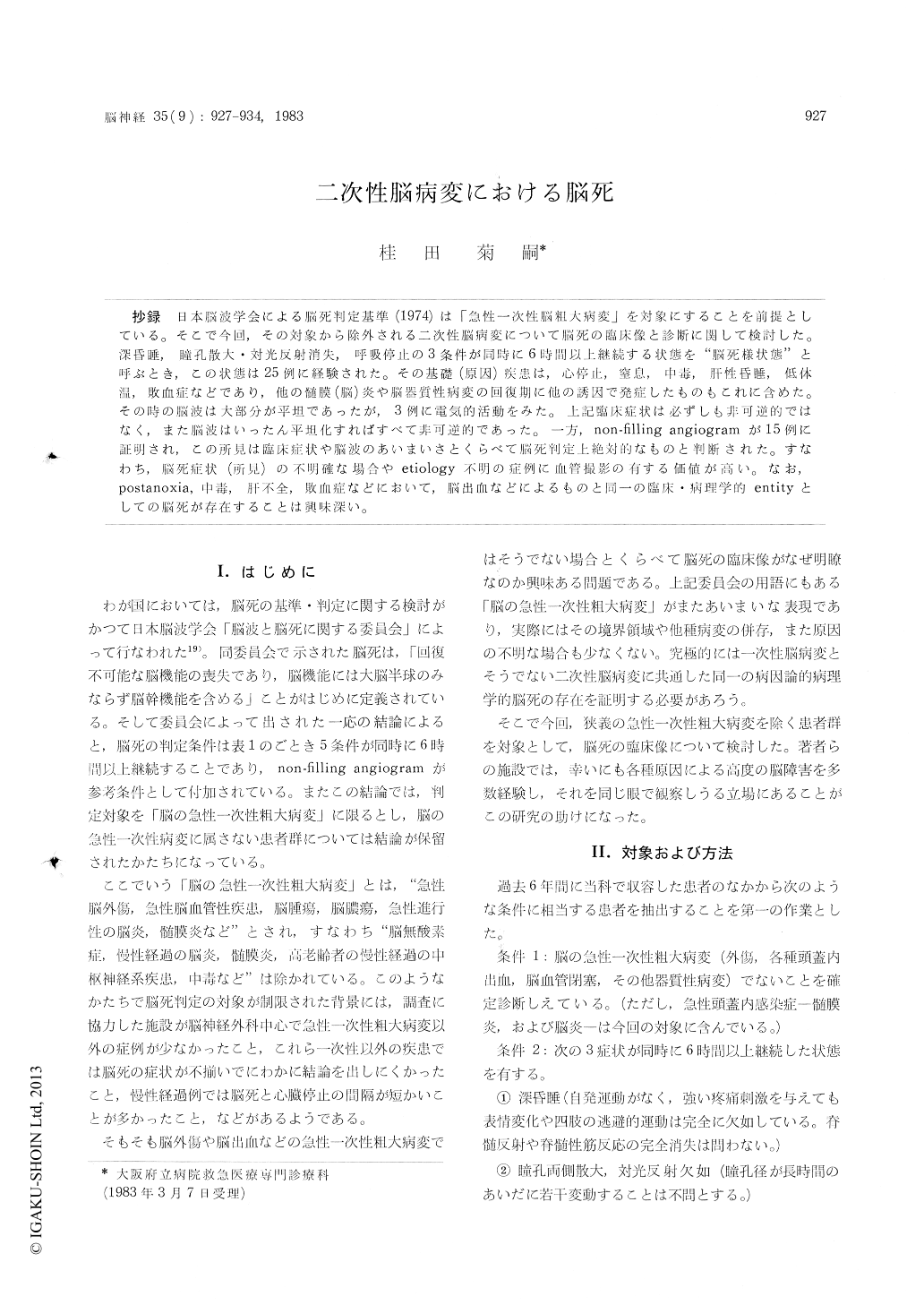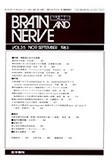Japanese
English
- 有料閲覧
- Abstract 文献概要
- 1ページ目 Look Inside
抄録 日本脳波学会による脳死判定基準(1974)は「急性一次性脳粗大病変」を対象にすることを前提としている。そこで今回,その対象から除外される二次性脳病変について脳死の臨床像と診断に関して検討した。深昏睡,瞳孔散大・対光反射消失,呼吸停止の3条件が同時に6時間以上継続する状態を"脳死様状態"と呼ぶとき,この状態は25例に経験された。その基礎(原因)疾患は,心停止,窒息,中毒,肝性昏睡,低体温,敗血症などであり,他の髄膜(脳)炎や脳器質性病変の回復期に他の誘因で発症したものもこれに含めた。その時の脳波は大部分が平坦であったが,3例に電気的活動をみた。上記臨床症状は必ずしも非可逆的ではなく,また脳波はいったん平坦化すればすべて非可逆的であった。一方,non-filling angiogramが15例に証明され,この所見は臨床症状や脳波のあいまいさとくらべて脳死判定上絶対的なものと判断された。すなわち,脳死症状(所見)の不明確な場合やetiology不明の症例に血管撮影の有する価値が高い。なお,postanoxia,中毒,肝不全,敗血症などにおいて,脳出血などによるものと同一の臨床・病理学的entityとしての脳死が存在することは興味深い。
The criteria of brain death established by Japanese Society of EEG in 1974, necessitates a prerequisite; be applicable only to "acute destruc-tive, primary gross lesion of brain". Namely, because of insufficient clinical data, secondary brain lesion such as post-anoxia, intoxication, metabolic coma and some kinds of CNS infection were excluded for the object to determine brain death. The criteria published by others also describe that etiology of coma should be clarified, and that careful measures are necessary to diag-nose brain death if the cause of coma is unknown.
In the present study, it was investigated that whether a clinico-pathological entity of brain death could exist universally regardless of the etiology, and by what means it could be defined clinically.
The patients suffering from nondestructive, secondary brain lesions and who showed "brain death-like state" were selected for the study. ("Brain death-like state" requires coma, dilated nonreactive pupis and arrest of respiration concom-itantly for more than 6 hours.) And 25 patients were collected, whose underlying diseases were post-anoxia or shock, CO intoxication, Paraquat poisoning, near-drawning or suffocation, hepatic coma, accidental hypothermia and sepsis, with or without the episode of cardiac arrest.
Though all the patients died from 1 to 13 days after the insult, clinical signs of brain death-like state were not always irreversible. Isoelectric EEG was obtained on that state in 11 patients and repeated EEG revealed no return on those patients. But another 5 patients showed EEG activity when brain death was strongly suspected clinically. Thus, clinical signs and EEG were not thought to be a definitive tool diagnosing brain death resulting from secondary brain injury.
Cerebral angiography was performed by 22 times on 20 patients and non-filling phenomenon was obtained on 15 patients. When non-filling angio-gram appeared, EEG on that time was unexcep-tionally flat and clinical signs of brain death remained stable.
As conclusions, the same clinico-pathological entity was recognized in secondary brain lesions. A single non-filling angiograrn was interpreted as a most reliable and definitive sign of brain death even if the etiology is unknown.

Copyright © 1983, Igaku-Shoin Ltd. All rights reserved.


